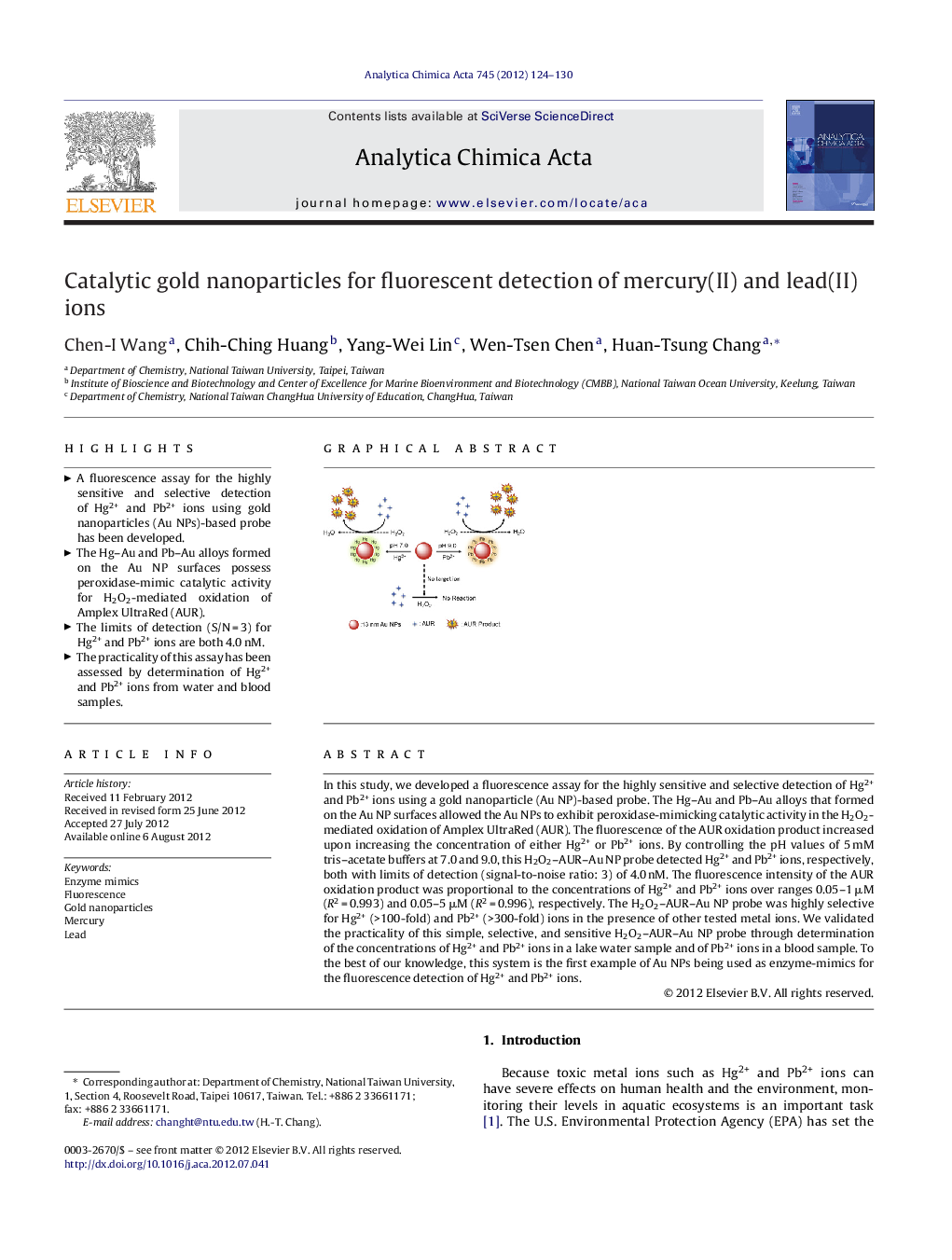| Article ID | Journal | Published Year | Pages | File Type |
|---|---|---|---|---|
| 1165711 | Analytica Chimica Acta | 2012 | 7 Pages |
In this study, we developed a fluorescence assay for the highly sensitive and selective detection of Hg2+ and Pb2+ ions using a gold nanoparticle (Au NP)-based probe. The Hg–Au and Pb–Au alloys that formed on the Au NP surfaces allowed the Au NPs to exhibit peroxidase-mimicking catalytic activity in the H2O2-mediated oxidation of Amplex UltraRed (AUR). The fluorescence of the AUR oxidation product increased upon increasing the concentration of either Hg2+ or Pb2+ ions. By controlling the pH values of 5 mM tris–acetate buffers at 7.0 and 9.0, this H2O2–AUR–Au NP probe detected Hg2+ and Pb2+ ions, respectively, both with limits of detection (signal-to-noise ratio: 3) of 4.0 nM. The fluorescence intensity of the AUR oxidation product was proportional to the concentrations of Hg2+ and Pb2+ ions over ranges 0.05–1 μM (R2 = 0.993) and 0.05–5 μM (R2 = 0.996), respectively. The H2O2–AUR–Au NP probe was highly selective for Hg2+ (>100-fold) and Pb2+ (>300-fold) ions in the presence of other tested metal ions. We validated the practicality of this simple, selective, and sensitive H2O2–AUR–Au NP probe through determination of the concentrations of Hg2+ and Pb2+ ions in a lake water sample and of Pb2+ ions in a blood sample. To the best of our knowledge, this system is the first example of Au NPs being used as enzyme-mimics for the fluorescence detection of Hg2+ and Pb2+ ions.
Graphical abstractFigure optionsDownload full-size imageDownload as PowerPoint slideHighlights► A fluorescence assay for the highly sensitive and selective detection of Hg2+ and Pb2+ ions using gold nanoparticles (Au NPs)-based probe has been developed. ► The Hg–Au and Pb–Au alloys formed on the Au NP surfaces possess peroxidase-mimic catalytic activity for H2O2-mediated oxidation of Amplex UltraRed (AUR). ► The limits of detection (S/N = 3) for Hg2+ and Pb2+ ions are both 4.0 nM. ► The practicality of this assay has been assessed by determination of Hg2+ and Pb2+ ions from water and blood samples.
